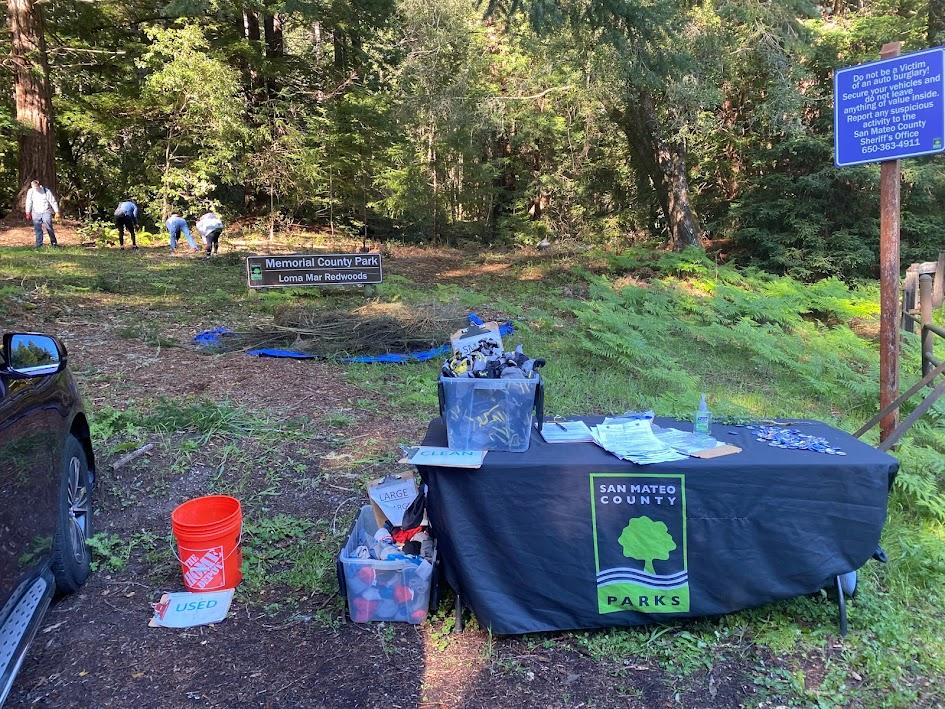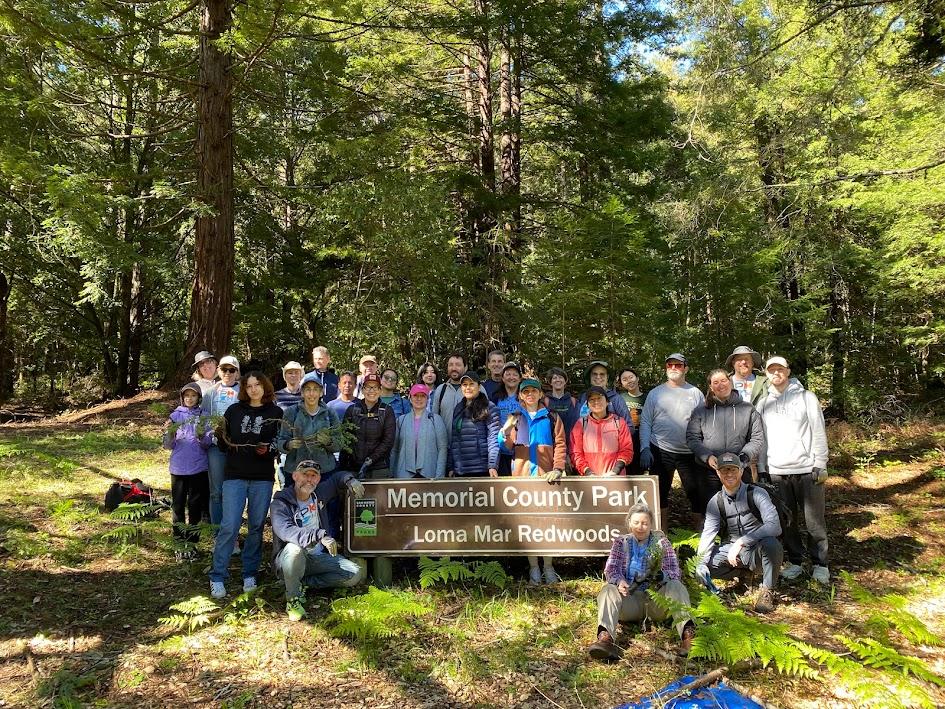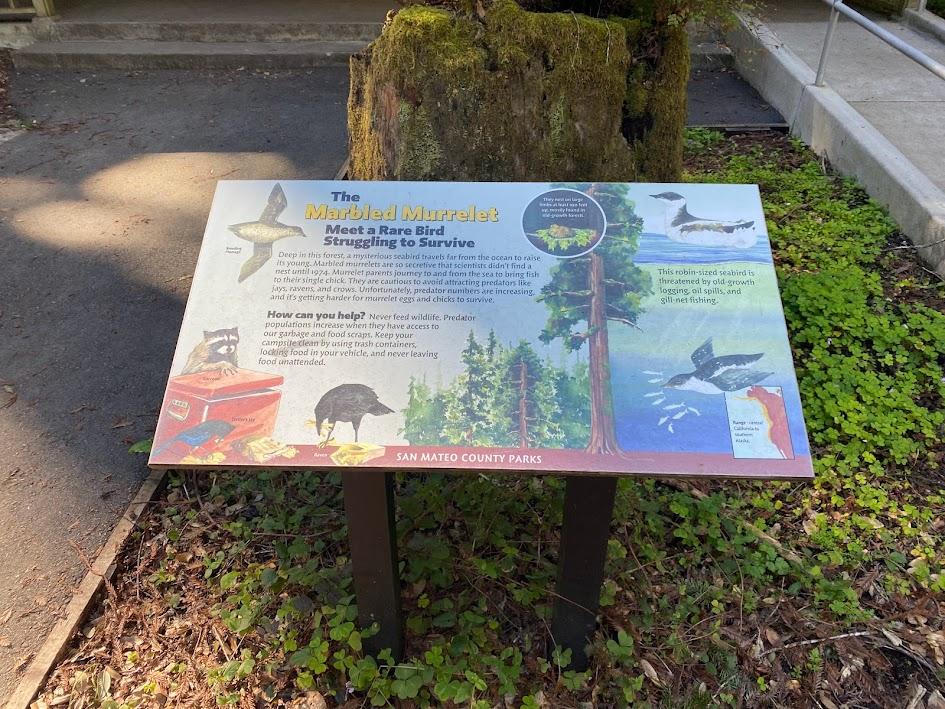April 06 2024 at 10:00AM
Event Recap | Learnings from the Redwoods
On March 16, 2024, the PMI SF Bay Area Chapter Sustainability Program joined with the Silicon Valley chapter to host a morning event: “Native Habitat Restoration in the Loma Mar Redwoods.”


Our group set out to weed out French Broom, an invasive plant species, from the foot of the redwoods. The plant is native to countries surrounding the Mediterranean Sea and in the Azores Islands off Portugal. Quick-growing and prolific, it can overpower native plants and hinder reforestation. French Broom leaves and seeds are toxic to farmed animals and it “is believed to be responsible for reducing arthropod populations by one-third in Golden Gate National Recreation Area.”1

The group fanned out to choose their places to clear. A few people completely cleaned a clearing shortly up the path, creating a huge pile of uprooted bloom in the center. Some folks went along the road where larger plants had taken hold and had roots that required tools and yanking to dislodge. The rest of us spread out in a large open area and set to plucking the mostly small (2-3” tall) plants, avoiding the poison oak (no rashes here, and hopefully true of all who came).

The area was looking pretty clear by 11:15am (Go, team!) and our ranger host, Stuart Smith, offered to point us to a nice walk in the redwoods. As he walked us through the towering redwoods along a stream, he stopped to point out the plant life in this part of the forest: sorrel, two kinds of fern, not much else. In a fair fight (against native species), redwoods are good at avoiding decay, fire, and nuisance undergrowth. The area we worked on should have looked like this. He also pointed out the redwood stumps here and there, recalling to us a book by ecologist Dr. Suzanne Simard2 in which she talks about how forests were historically managed by companies that profited from harvesting them. Simard came to discover that trees like being with other trees and that what we think of as mushrooms, the part above ground, are not the mushroom but just the fruit. Mycelium (mushrooms) are an underground network closely connected to the trees who talk to each other via their root systems.

He invited us to listen and notice the birds, which we hadn’t heard in the weeding zone. He said they would happily set upon the area and enjoy our foraging help once we “noisy, stinky humans” were gone. Also spotted during our time were several banana slugs and what was a California Slender Salamander, best I can tell.

The trip was a half day to and from the East Bay and so satisfying – working with others to make things a little better for the mighty redwoods, resident animals, and visiting hikers. Really getting away helped me to remember how lovely and lively the forest is and that it needs me, even when I haven’t thought about it for a year. Thanks to Matt Booth, Erica Nuñez, and Samantha Moy of the PMI SFBAC Sustainability Program and Stuart Smith of San Mateo County Parks.
- D’Antonio, Carla. “IPCW Plant Report: Genista monspessulana.” California Invasvie Plant Council, www.cal-ipc.org. https://www.cal-ipc.org/resources/library/publications/ipcw/report52/. 4/1/24.
- Simard, Suzanne. (2021) Finding the Mother Tree: Discovering the Wisdom of the Forest. Knopf.
2b. Simard, S. (2016, June). How trees talk to each other [video]. TED Conferences. https://www.ted.com/talks/suzanne_simard_how_trees_talk_to_each_other
Follow our News




